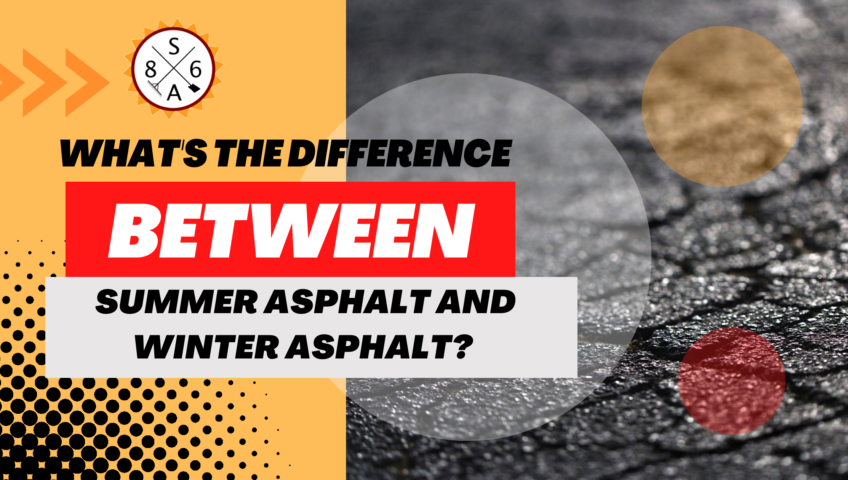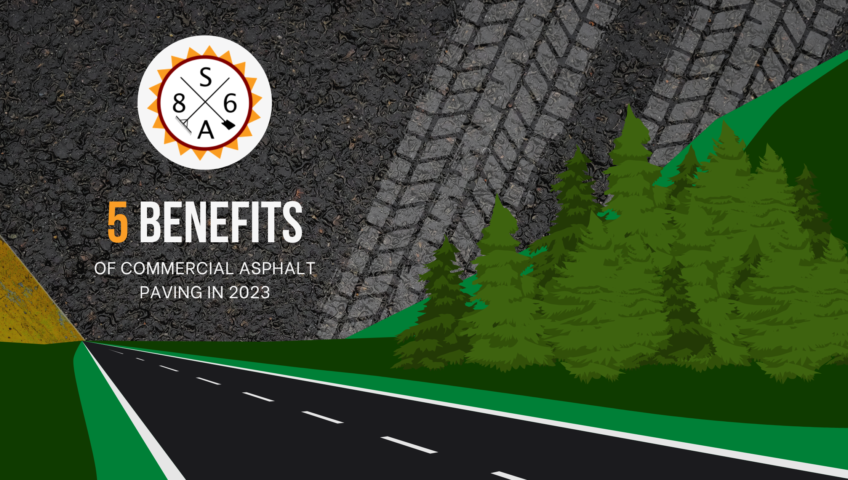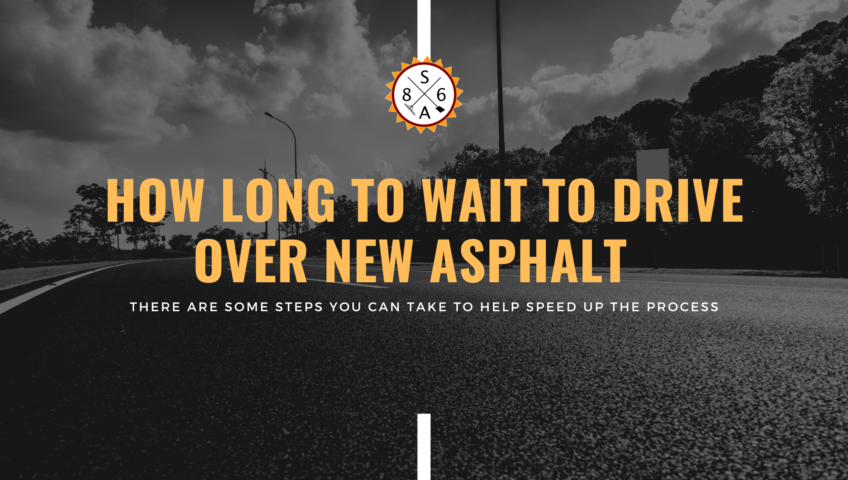
Highways Designed with Snow and Cold in Mind
One of the more critical things to consider when it comes to asphalt construction is also one of those things that most people just don’t spend too much time thinking about: the climate.
An asphalt highway in an area that is traditionally hot all year round like Texas may look the same as one that exists in Maine – at least on the surface. But the latter is located in a place that gets particularly cold winters and that is something that absolutely has to be taken into account. In fact, there are a number of important components to highways that are designed with snow and cold in mind that you should absolutely be aware of moving forward.
Temperature Extremes
One of the major ways that highways are designed with snow and cold in mind has to do with what happens to materials like asphalt during extreme changes in temperature.
Keep in mind that materials expand and contract as the weather changes around them and unless this is accounted for, it could result in significant cracking at best and a serious compromise to the integrity of the highway at worst. In Bangor, Maine, for example, the leverage low in January is just 7 degrees Fahrenheit. By April, the average high is 53 degrees Fahrenheit. That’s a significant difference and over time that could cause premature and long-term damage to the highway itself if it were not a factor in the design.
Drainage
Because asphalt is porous, it actually performs better than other types of materials in colder weather. However, this comes with a cost. Because the ice and snow melts faster, drainage has to be a top priority.
Thankfully, PVC drain piping (and a layer of gravel under the surface) go a long way towards accomplishing these goals. Not only does it help keep the highway safe, but it also reduces the overall amount of salt that needs to be used to treat the roads during the winter as well.
Fencing Around Asphalt
Snow fencing is another technique that is commonly used to preserve safety and performance for highways that are located in areas that get a lot of snow. Snow fencing can actually be put up as the colder weather approaches, and it’s a great way to prevent drifts from appearing on the road, thus putting drivers in a significant amount of harm during extreme storms.
Road Slope and Bridge Design
Finally, a lot of people don’t realize that even the pitch of the road is taken into consideration in areas that see a lot of ice and snow during the cold winter months. Highways in rural areas, for example, have a banked curve of no more than 5% to help prevent issues like sliding. Bridges on these highways are also constructed with a protective coating to help prevent premature corrosion due to the massive volumes of road salt that get used every year as the temperatures start to drop and ice builds up.
If you’d like to find out more information about the various factors that are considered when experts design an asphalt highway with snow and cold in mind, or if you’d just like to talk about the finer points of asphalt construction with someone in a bit more detail, please feel free to contact us today.
One of the more critical things to consider when it comes to asphalt construction is also one of those things that most people just don’t spend too much time thinking about: the climate.
An asphalt highway in an area that is traditionally hot all year round like Texas may look the same as one that exists in Maine – at least on the surface. But the latter is located in a place that gets particularly cold winters and that is something that absolutely has to be taken into account. In fact, there are a number of important components to highways that are designed with snow and cold in mind that you should absolutely be aware of moving forward.
Temperature Extremes
One of the major ways that highways are designed with snow and cold in mind has to do with what happens to materials like asphalt during extreme changes in temperature.
Keep in mind that materials expand and contract as the weather changes around them and unless this is accounted for, it could result in significant cracking at best and a serious compromise to the integrity of the highway at worst. In Bangor, Maine, for example, the leverage low in January is just 7 degrees Fahrenheit. By April, the average high is 53 degrees Fahrenheit. That’s a significant difference and over time that could cause premature and long-term damage to the highway itself if it were not a factor in the design.
Drainage
Because asphalt is porous, it actually performs better than other types of materials in colder weather. However, this comes with a cost. Because the ice and snow melts faster, drainage has to be a top priority.
Thankfully, PVC drain piping (and a layer of gravel under the surface) go a long way towards accomplishing these goals. Not only does it help keep the highway safe, but it also reduces the overall amount of salt that needs to be used to treat the roads during the winter as well.
Fencing Around Asphalt
Snow fencing is another technique that is commonly used to preserve safety and performance for highways that are located in areas that get a lot of snow. Snow fencing can actually be put up as the colder weather approaches, and it’s a great way to prevent drifts from appearing on the road, thus putting drivers in a significant amount of harm during extreme storms.
Road Slope and Bridge Design
Finally, a lot of people don’t realize that even the pitch of the road is taken into consideration in areas that see a lot of ice and snow during the cold winter months. Highways in rural areas, for example, have a banked curve of no more than 5% to help prevent issues like sliding. Bridges on these highways are also constructed with a protective coating to help prevent premature corrosion due to the massive volumes of road salt that get used every year as the temperatures start to drop and ice builds up.
If you’d like to find out more information about the various factors that are considered when experts design an asphalt highway with snow and cold in mind, or if you’d just like to talk about the finer points of asphalt construction with someone in a bit more detail, please feel free to contact us today.




